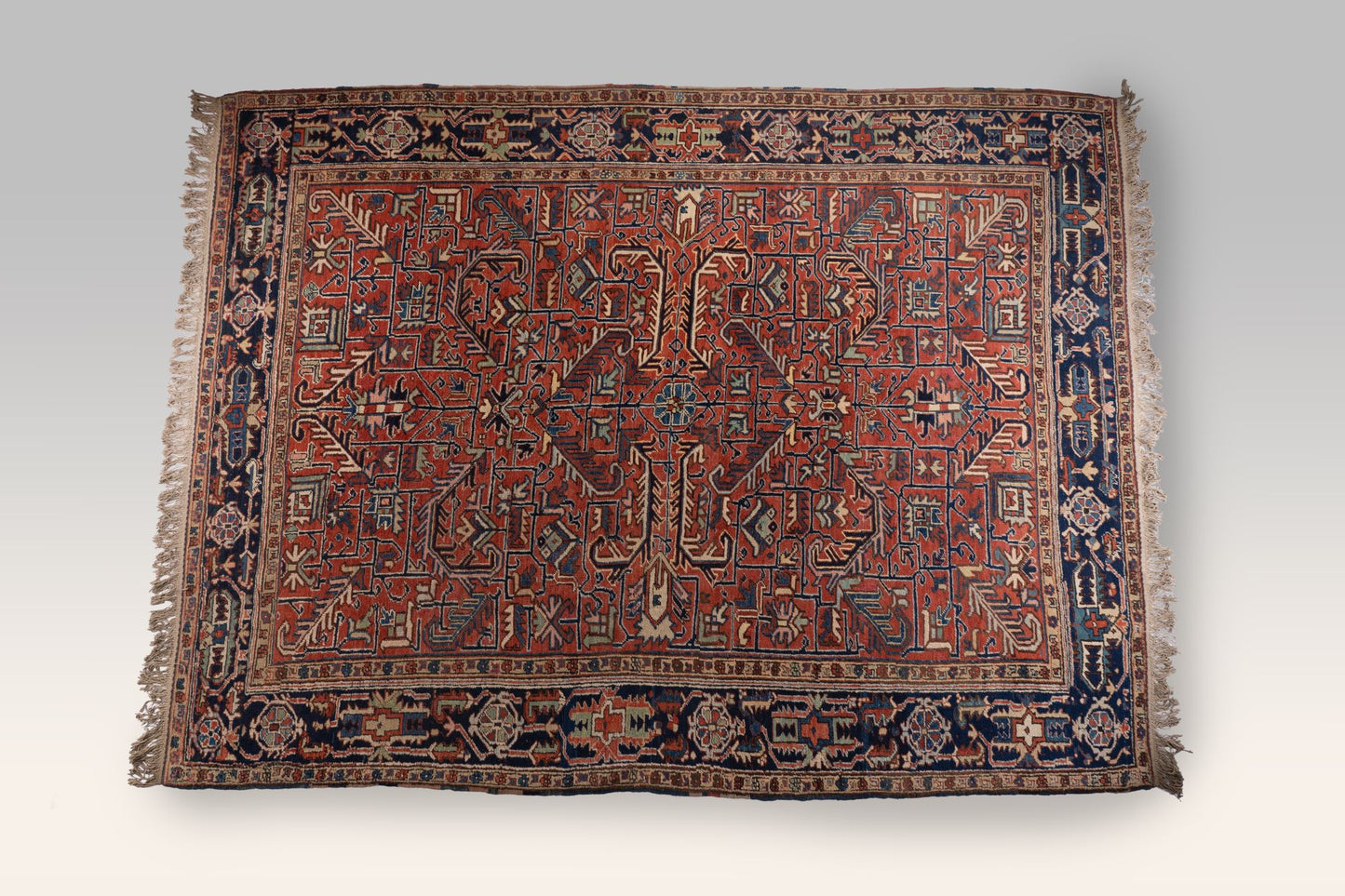Le Souk Antiquaire
A Geometric Persian Heriz Carpet
A Geometric Persian Heriz Carpet
Dimensions- 300 x 235 cm
Circa - early to mid-20th century (e.g., 1920s-1930s)
Material- Hand-knotted wool pile on a cotton foundation
Style- Village & Tribal workmanship
Place of Origin- Northwest Iran around Heriz Village
Background-
It is a hand-knotted rug, which is a labor-intensive process where individual knots are tied to the warps, forming the pile. This method results in durable and highly detailed carpets.
Heriz carpets are known for bold geometric pattern and durability.
The central medallion is a dominant feature, often symbolizing a lotus flower, an open eye, or a central point of the universe. The corners echo elements of the medallion. The field (the area around the medallion) is filled with a repeating or semi-repeating pattern of flowers and vines. The borders typically frame the main design and can be narrow or wide, often featuring their own distinct motifs (like herati or turtle patterns, deep reds (possibly madder or terracotta tones), various shades of blue (navy, lighter blues), and off-white/cream, with accents of other colors that might include gold/ochre. This is a classic and enduring color combination in Oriental rugs.
These carpets were primarily woven by village and tribal artisans, not in urban workshops, giving them a charming 'folk art' feel.
Price upon Request-
Share


